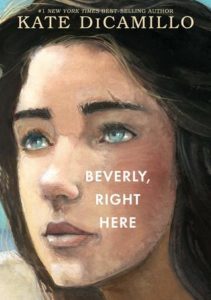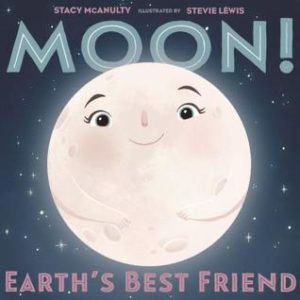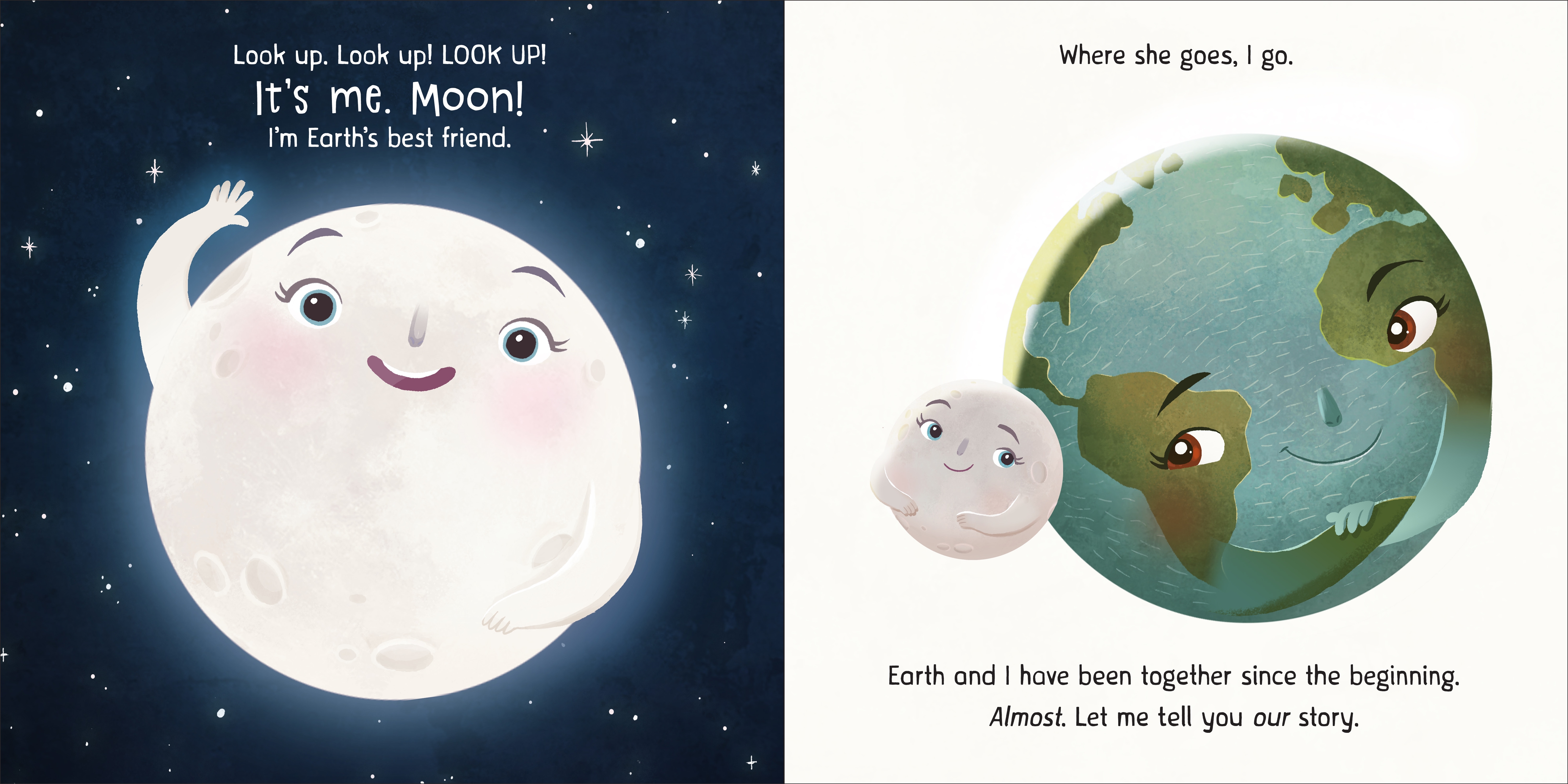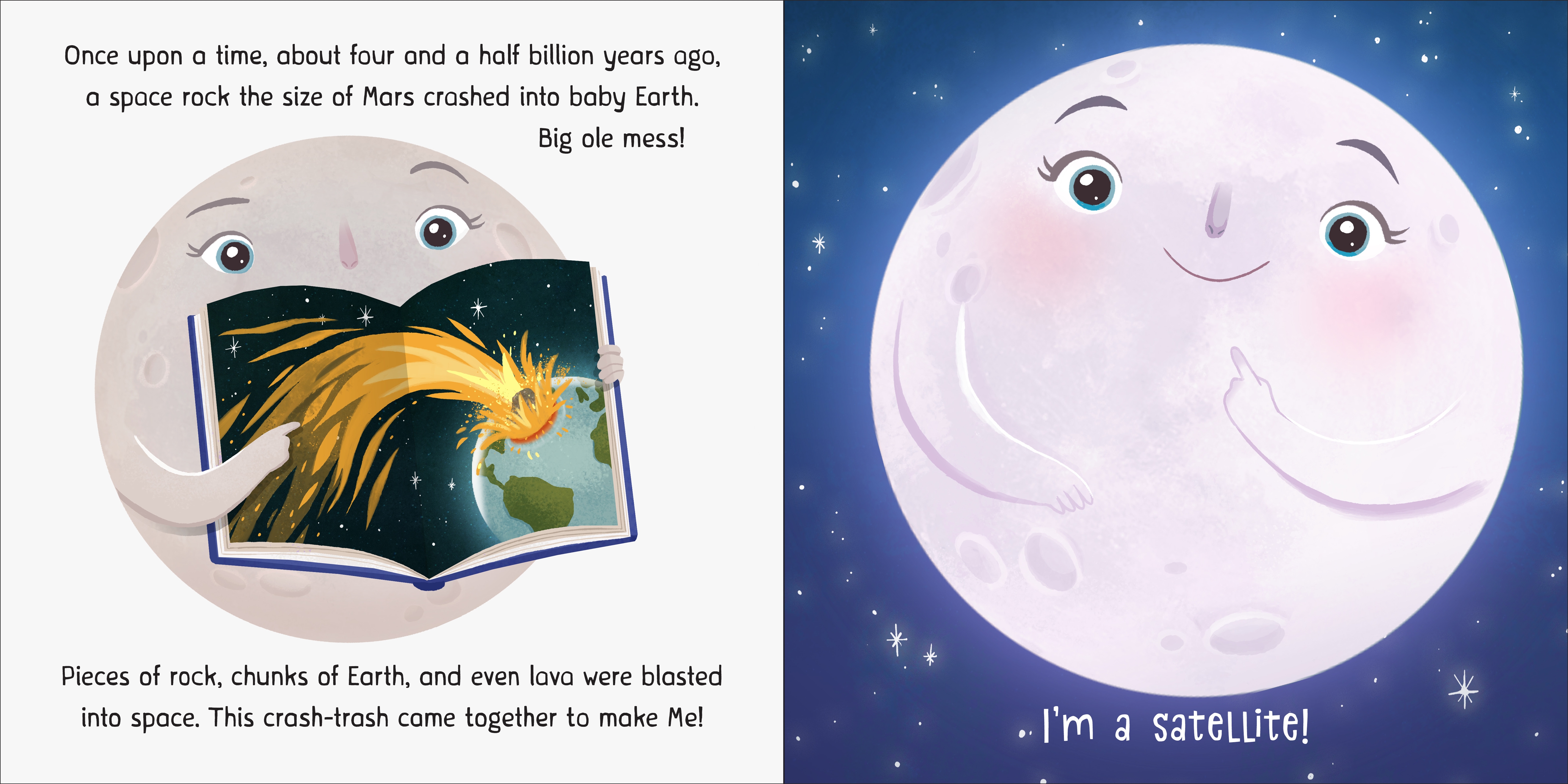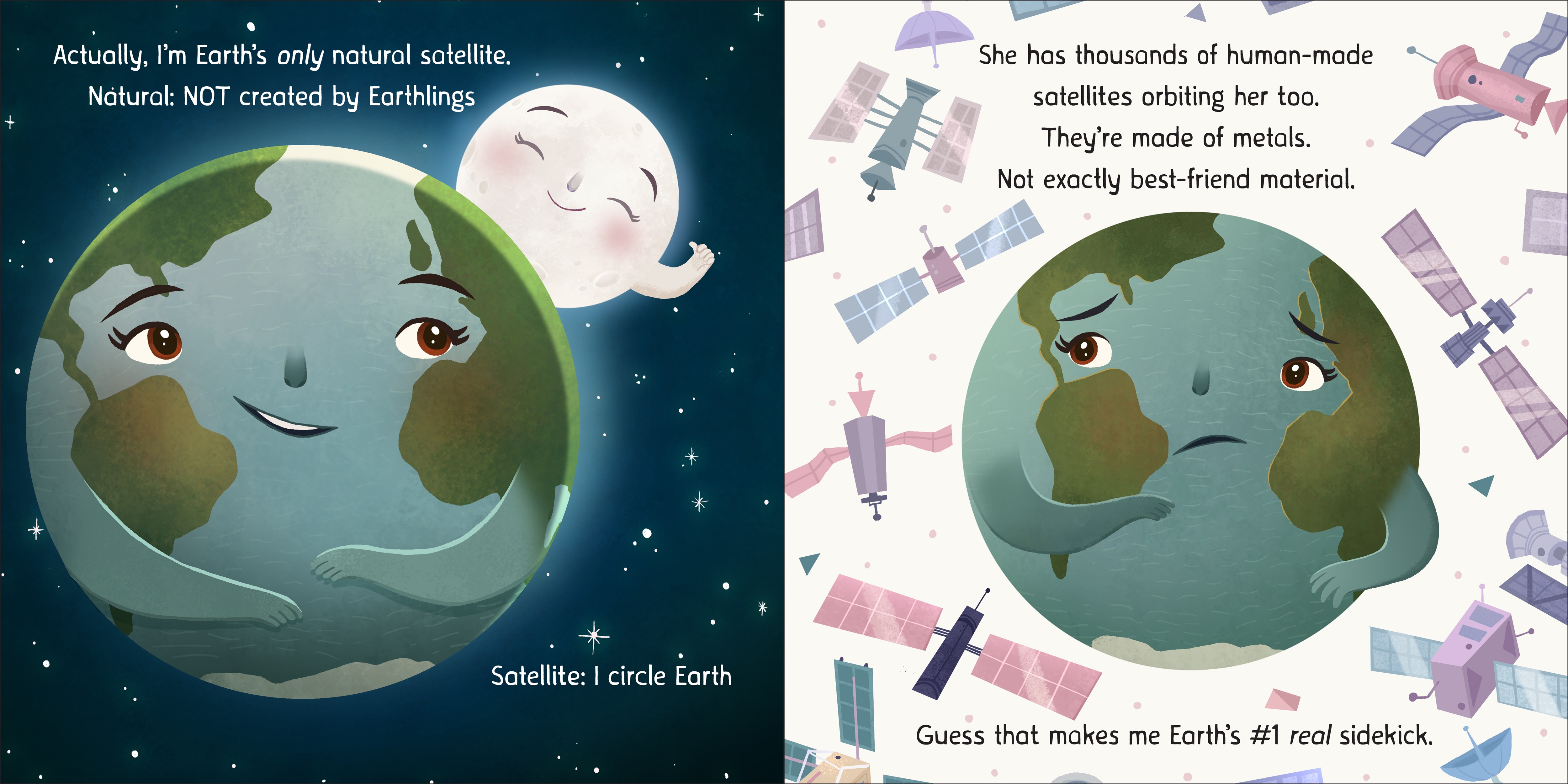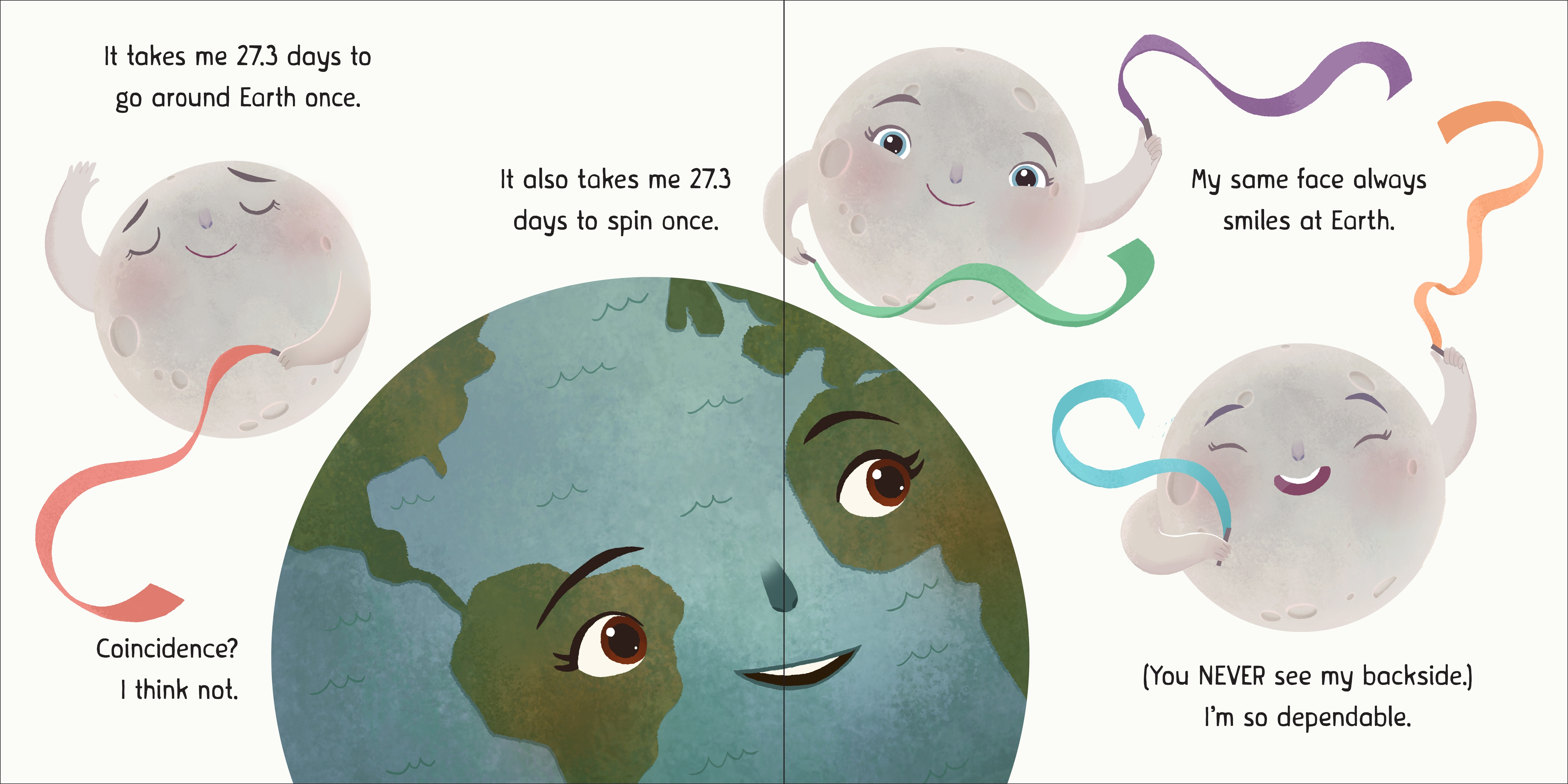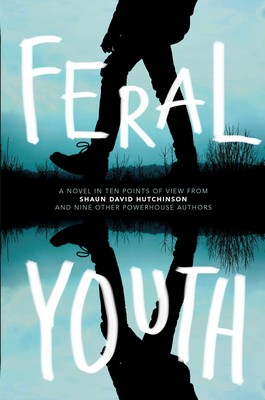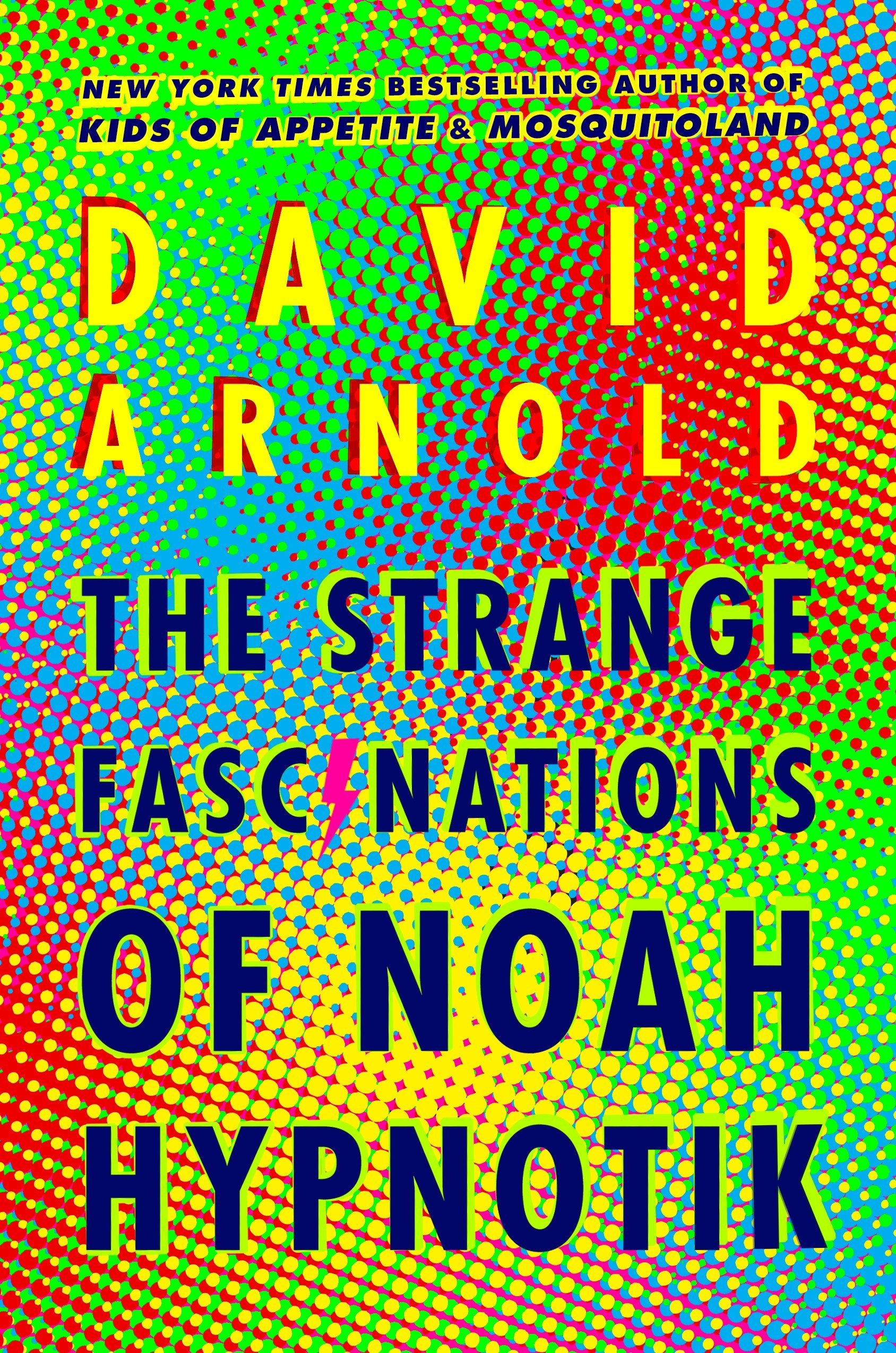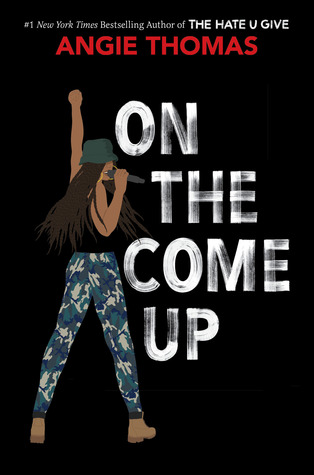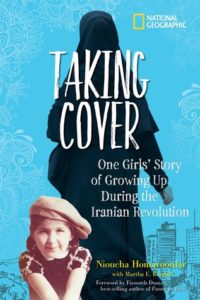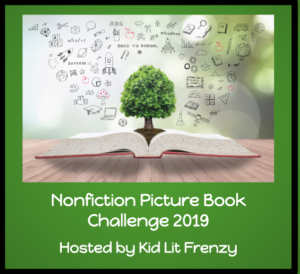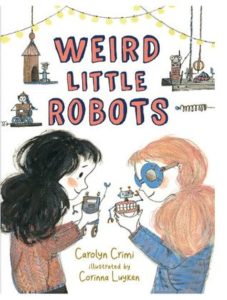
Weird Little Robots
Author: Carolyn Crimi
Illustrator: Corinna Luyken
Published October 1st, 2019 by Candlewick
Summary: When two science-savvy girls create an entire robot world, they don’t expect the robots to come alive. But life may be a bit more magical than they thought.
Nine-year-old Penny Rose has just moved to a new town, and so far the robots she builds herself are her only company. But with just a bit of magic, everything changes: she becomes best friends with Lark, has the chance to join a secret science club, and discovers that her robots are alive. Penny Rose hardly remembers how lonely she used to feel. But then a fateful misstep forces her to choose between the best friend she’s always hoped for and the club she’s always dreamed of, and in the end it may be her beloved little robots that pay the price.
Praise: [A]uthor Crimi infuses this unassuming transitional novel with compassion, humor, and a refreshing storyline in which girls organically weave a love for science into their everyday lives. Illustrations by Luyken add to the guileless sensibility. A contemplation on the magic of friendship told with sweetness, simplicity, and science.—Kirkus Reviews
**BEA Middle Grade Book Buzz Book
About the Author: Carolyn Crimi enjoys snacking, pugs, Halloween, and writing, although not necessarily in that order. Over the years she has published 15 funny books for children, including Don’t Need Friends, Henry and the Buccaneer Bunnies, Where’s My Mummy?, There Might Be Lobsters, and I Am The Boss of This Chair. Weird Little Robots is her first novel.
For more information, and to download a free classroom guide for Weird Little Robots, visit her website. and Twitter @crims10.
Review: Thank goodness books like this exist out in the world. I cannot wait to see what this new generation of kids are like as adults now that they all have these amazing stories of smart girls to read. Even the characters who fit a certain stereotype for Penny Rose ended up proving her wrong. This book shows that there is more to everything than anyone can imagine: more to science, more to friendship, more to imagination… What a fantastic world that Penny and Lark’s story can be told!
And the story itself is one that is fun to read. Not only do you get to read about robots, engineering, ornithology, and even decorating, but the book includes a story that many kids will connect with: do you abandon one to join the others even if the one is your best friend and the others is giving an opportunity that is hard to refuse. That is something that everyone faces more than once in their life. And told in a lyrical and a bit quirky narrative, the story is just fun to read.
Teachers’ Tools for Navigation: A Classroom Guide for Weird Little Robots can be found on Carolyn Crimi’s website!
Discussion Questions:
- What do Penny Rose and Lark have in common?
- Why do you think Penny Rose made the decision she did about the secret society? Did she regret it in the end? How could she have dealt with it differently?
- If you were going to build a little robot RIGHT NOW, what items are in your backpack that you could use? Use these items and sketch out a plan.
- How could Penny Rose have helped her other robots communicate with her?
- Why do you think the robots waited to communicate?
- What did the different members of the secret society show Penny Rose, and the reader, about judging others?
- Create your own conversation starters. Then, in class, group with 2 other people and use the conversation starters to chat. Rotate.
- What did Penny Rose’s one decision the turned her back on Lark cause?
- Penny Rose finds her way through the woods just by listening. As a class create an obstacle course that has different sounds throughout it and see if students can navigate through using only their hearing.
Flagged Passages: “First though, Penny Rose would need a detailed plan. She went up to her bedroom, sat on her bed, and turned on the lamp she had made last year from an olive oil can. A stack of notebooks sat on her nightstand: her New Inventions notebook, her Robot Drawings and Descriptions notebook, and her To-Do List notebook. Her most secret notebook, Conversation Starters, was at the bottom of the pile.
She picked it up, found a clean page, and wrote a quick list of Possible Conversation Starters:
- “I think binoculars are fun.” (Lark seems to like binoculars.)
- “The sun seems strong today.” (Lark often wears sun goop. First determine if the sun does, indeed, seem strong.)
- “Sunglasses are very wise.” (Lark wears sunglasses.)
- “Do you like robots?” (It is unknown whether or not Lark likes robots, but it is probable that she does since most people do.)
- “Yesterday was my birthday. Would you like some leftover cake?” (This seems like a good bet, unless she has allergies or is gluten-free or vegan or something.)
- “What is in that metal box?” (This might be too nosy, although if you’re going to carry something so mysterious, you should be prepared for questions.)
Penny Rose looked over her list. She considered what her father said about Lark not hearing before. She decided she would speak loudly.
Penny Rose tore out the page and tucked it into the tool belt she wore in case she happened upon interesting items for her robots.” (Chapter One)
Read This If You Love: Ellie Engineer by Jackson Pearce, Ada Twist by Andrea Beaty, Marty McGuire by Kate Messner, The Evolution of Calpurnia Tate by Jacqueline Kelly, The Last Panther by Todd Mitchell, Frank Einstein by Jon Scieszka
Recommended For:



**Thank you to Blue Slip Media for providing a copy for review!**
